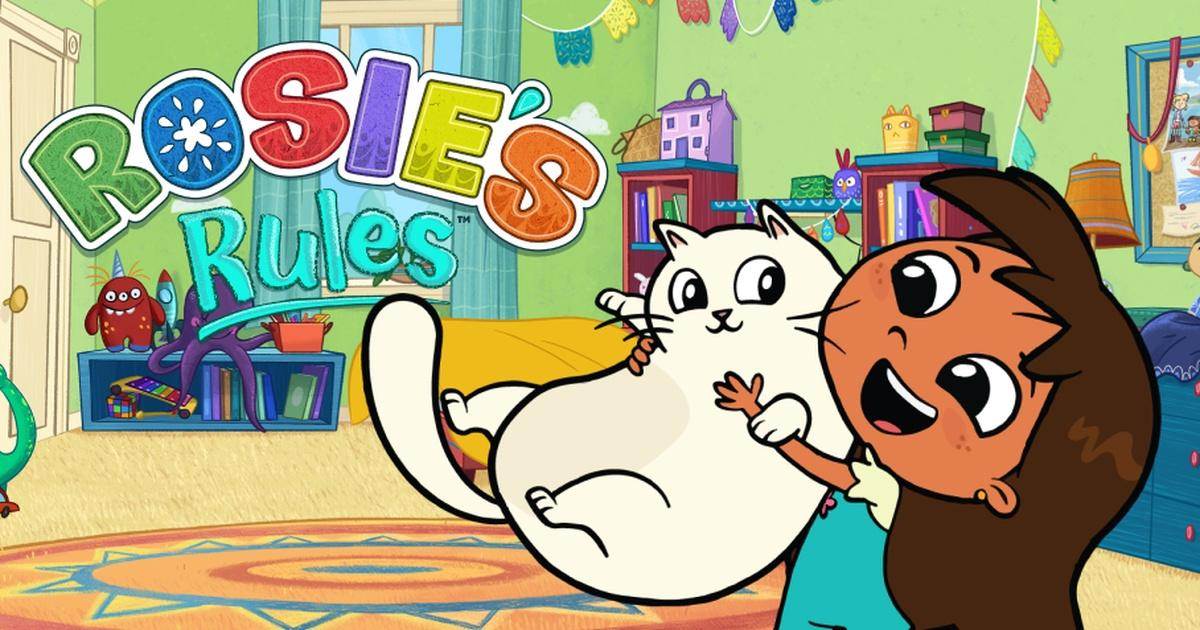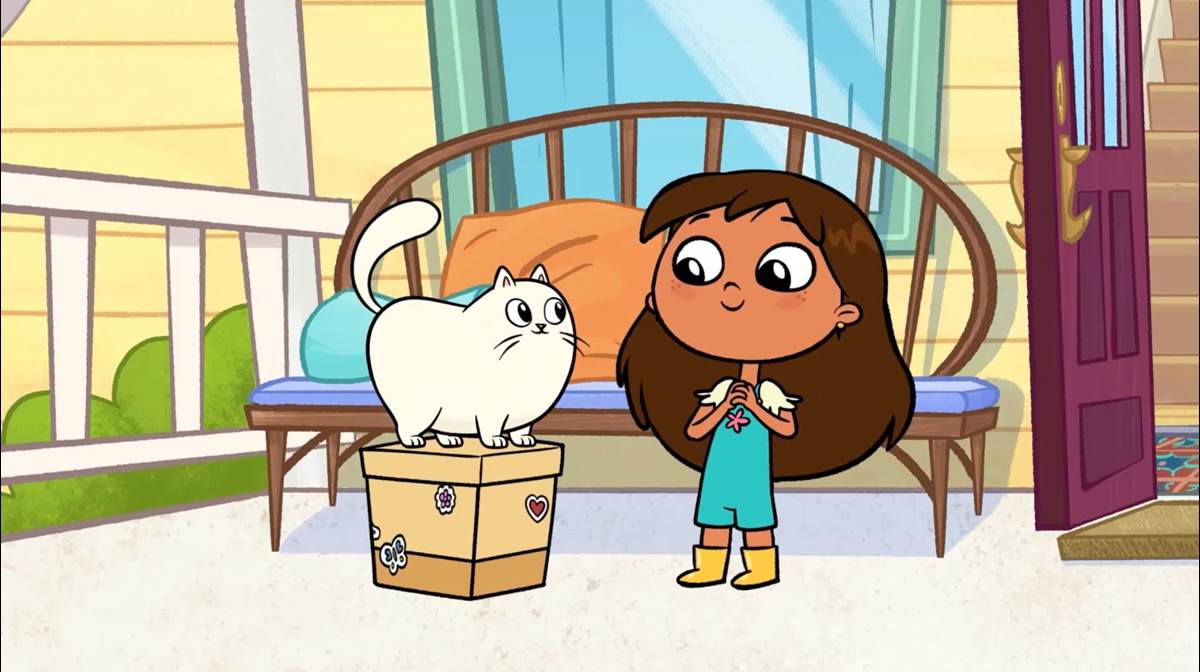“This show has resonated with adult parents as well as kids,” Rosie’s Rules series creator and executive producer Jennifer Hamburg revealed during a TCA press conference for PBS KIDS’ new series, which launches October 3rd at 10:00 am. Jennifer has lent her writing talents to hit children's shows that include Doc McStuffins, Vampirina, and T.O.T.S. for Disney Junior, and Daniel Tiger’s Neighborhood for PBS KIDS. “When we first pitched the series about this blended bicultural family, half of the PBS people that I spoke with were like, ‘That's my family.’ They got as excited as the kids. They said, ‘That reminds me of myself.’ And we have seen nothing but more of that in research. Kids will say, ‘That's like me,’ or, ‘That's like us.’”
Rosie’s Rules follows Rosie Fuentes, a 5-year-old Mexican-American girl learning about the world outside of her home. “I have a father who is Mexican and a mother who's Polish,” shared executive producer Mariana Diaz-Wionczek, Ph.D. “The foundation of her social interactions starts with the family, and then goes outside of the family to her community. Her heritage, both on her dad's side — the dad being from Mexico City — and her mom's side of being from rural Wisconsin — come into play in everyday life, and she's proud of this heritage. You can see aspects of both heritage present in the family and the home. And you see things all over the house; you see the way that they speak to one another. We were intentional with finding their Spanish and English abilities, and how they speak to one another. And the way that they connect with the members of their community is also from the perspective of a child; how she relates to her neighbor friends. The types of things they play and the types of things they share many times have a component of other cultural backgrounds of the characters. There are many opportunities to show these stories and the way that she interacts with her community and her family.”
“For the first couple of episodes, you don't really see the animations, but when you get to, like, the 20th episode or the 15th episode, you can see the drawings and stuff,” shared 9-year-old Ellora Lopez, who voices Rosie. “It's really fun because not everybody else gets to see a bunch of animations.” Across the board, the creative team tried to make sure that the backgrounds of each voice actor matches that of the character they voice. In Ellora’s case, she has a Mexican background just like Rosie.
“Our series is about social studies, so it's about daily things in kids' lives that make a difference, that they didn't know before, like, what an address on a door is,” Jennifer explained. “We have a whole episode about different types of dwellings: homes versus apartments. And kids in New York City primarily live in apartments. When we tested that episode, it was a very different perspective because we had kids from all over, who lived in all different types of homes, and it was fascinating for us to see their perspectives. Some kids had never been in an apartment building in their life; some kids had never been anywhere but an apartment building. That's part of the process is meeting them at their level of knowledge, and then, using that to open their eyes to what else there is in the world.” Also meeting kids at their level, Rosie’s Rules will launch alongside web-based interactive games in English and Spanish.
Eighty 11-minute episodes of Rosie’s Rules have been produced, with each story tested by kids ages 3 to 6, plus their parents, to make sure the stories are engaging and the curriculum is appropriate. “We use a storybook,” Dr. Mariana Diaz-Wionczek shared, who previously worked with language-immersion curriculum for Nick Jr. on Dora the Explorer and Go Diego Go! “It's just the basic story that's going to be later told in a script form, just to make sure that kids are enjoying the story, understanding and learning the objectives that we have for them for the curriculum. It is a storybook with panels, and someone is reading those stories and asking questions to the kids after. It's sort of a discussion, and that's how we get the feedback.”
Feedback has already been positive, with test audiences particularly falling in love with Rosie’s pet cat. “Gatita has been a favorite of us writers, of the cast, of the kids watching, and research,” Jennifer shared about the fluffy scene stealer. “She was created as a sidekick to Rosie. She is a smart cat. We originally had tried to figure out if she was going to be a little bit more oppositional, but we realized that she is just happy to be there, and she wants to be there for Rosie and help Rosie succeed. So, if Rosie says, ‘This is the best way to do things,’ which she'll later learn is maybe not the best way, Gatita will go along on that journey with her. And she also has sort of morphed. We are very intentional in the scripting with Gatita. So, every ‘meow’ has emotion behind it. She's either agreeing with Rosie, or disagreeing, or has an idea, or is echoing her emotions. She's fun, and she's just really cute, too. She’s sometimes in the way, and Rosie has to move her, but Rosie loves, loves, loves her. When you see little kids and their pets, it's just this ooey, gooey love. Especially if it's a big fluffy cat. And she just can't get enough of Gatita.”
Kids won’t be able to get enough of Gatita, Rosie, and their friends and family when Rosie’s Rules launches on October 3rd.


